Today we are going to look at part three of understanding ingredients as part of my free basic cooking course. If you haven’t read the first two posts in this series you can do so here and here. In this post, we are going to look at garlic, carrots, celery, and peppers. We’ll look at different varieties, how to buy them, how to store them, and how to use them. Let’s get to it.
This is my…
BASIC COOKING COURSE WEEK 4: UNDERSTANDING INGREDIENTS PT. 3
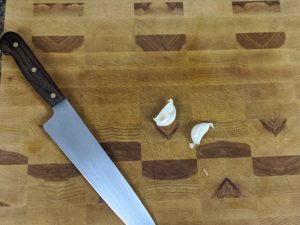
Garlic
When most people think of garlic the first cuisine that comes to mind is usually Italian. As ubiquitous as garlic is in Italian food, cuisines all around the world use it just as much if not more. It adds flavour to stir-fries, tacos, curries, pasta, and millions of other dishes. Despite its global use, garlic is actually indigenous to Central Asia and Iran.
There are a few different types of garlic you may encounter in the grocery store though the only one likely to be labelled differently than just “garlic” will be elephant garlic. Which as the name suggests is much larger than other garlic varieties. In fact, elephant garlic isn’t actually garlic at all but rather a type of leek.
When purchasing garlic look for bulbs with tightly packed and firm cloves. There should be no stems growing from the garlic though these are safe to eat. In some regions, the greens are left to grow and sold as garlic scapes. Once you get it home, garlic should be stored in a warm, dry place.
Prepared Garlic Products
There are a lot of prepared garlic products out there. Most of these come in the form of chopped garlic in oil sold in jars. Storing garlic in oil can be dangerous because it carries the potential for botulism which is an anaerobic bacteria meaning it doesn’t need air to survive. Oil creates an airtight seal around the garlic, creating the perfect environment for botulism to grow. To prevent this, prepared garlic products have to be pasteurized before being sold. This changes the flavour and the nutritional content of the garlic. As convenient as it is, I always recommend not buying these prepared garlic products.
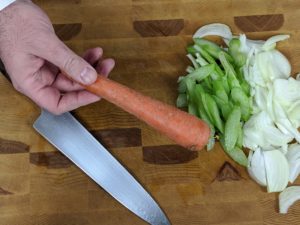
Carrots
When we think of carrots we often think of an orange root vegetable. Though some carrots are orange there are also purple, red, yellow, white, and black carrots as well. The colour of the carrot doesn’t really have an effect on the flavour.
Like other foods, there are a lot of different varieties of carrots. Baby carrots are not one of them as they are just regular carrots that have been shaved and shaped. Despite the diversity of carrots we generally only have access to one, or maybe two types at the grocery store. We will find the regular, all-purpose carrots usually sold in a 3-5 lb bag. These are long and skinny and have a fairly sweet flavour. Then there are heirloom carrots that are generally sold in a bunch of 6 or 7 with the greens still attached. These heirloom carrots generally come in a variety of colours and their flavour is less sweet than all-purpose carrots.
Despite the fact that we almost always peel carrots the whole plant is edible. This includes the leaves, and peel. The peel is also where a lot of the carrot’s nutrients are stored. I often prefer to scrub the carrot clean under cold running water and leaving the peel intact. This way the carrot’s most nutrient-dense area isn’t going in the compost. Leaving the peel on the carrot also gives it a more “carroty” flavour.
Carrots stored in the crisper drawer of the fridge can last for up to a few months.
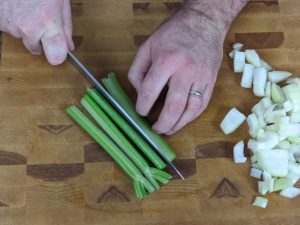
Celery
Celery comes in a few different forms. At the grocery store, we find celery, which is the stalks of the plant. We will also find celery seed and possibly celery root. What’s interesting is that all three of these celery products come from different celery plants.
When we buy regular celery at the store it is a variety called pascal celery. That doesn’t really matter because you aren’t likely to find another variety of regular celery. Celery seed, on the other hand, comes from wild celery. The stalks of wild celery are woody and have a very strong flavour. Though edible, wild celery is not very common. Celery root, also known as celeriac is another variety of celery grown for its bulbus root. It tastes a lot like celery but has a texture more similar to potatoes.
Celery is best stored in the fridge with the bottom of the stocks cut off and stood up in a bit of water. The water should be changed every 2-3 days. Celery root should be stored in the crisper drawer for up to a few weeks.
Although celery can and is often eaten raw, it’s real benefit comes from adding flavour to soups, and stews. It is one of the three ingredients in French mirepoix (onions, celery, and carrots) which makes up the base of a lot of French cooking. Celery root should be peeled prior to cooking. It can be mashed with potatoes, roasted, or shaved and eaten on salads. It is also very good in soups and stews.
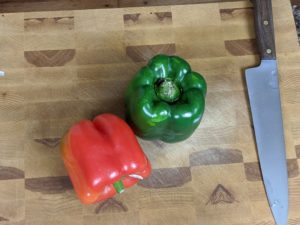
Bell Peppers
Bell peppers are members of the capsicum and are the only member of that family not to produce capsaicin. Capsaicin is what makes chili peppers hot. Bell peppers come in a variety of colours of which red, green, orange and yellow are the most common. Purple, brown, and white bell peppers may also be seen.
At the grocery store, we are most commonly going to see red, green, and yellow bell peppers. Although there are some varieties of bell pepper that stay yellow all the time this is typically not the case with the ones we find in the grocery store. The bell peppers we buy are actually just the same pepper at different stages of ripeness. Green is the youngest and cheapest. Yellow is in the middle, and red is the most mature. The level of ripeness has a drastic effect on the flavour of the pepper. Green peppers are mildly sweet and slightly bitter, while red peppers are very sweet with no bitterness at all. Purple, white and brown bell peppers are a separate variety.
When buying bell peppers look for smooth, shiny skin, and firm flesh. Avoid peppers with soft spots, or loose skin. Store bell peppers in the crisper of your fridge unwashed. Moisture on the skin will cause them to rot quicker. Wash them just before use.
Bell peppers can be eaten raw, roasted, stuffed, grilled, or cooked into soups, or stir-fries. When adding them to soups or pasta sauces, put them in around the last third of the cooking time. Adding bell peppers to long cooking dishes may cause bitterness.
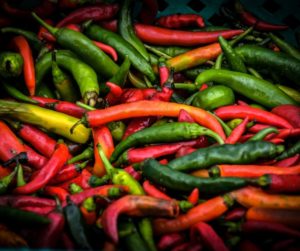
Chili (chilli) Peppers
Chili peppers or chilli peppers are close cousins to the bell pepper. The big difference, of course, is that chili peppers are spicy. The spice comes from capsaicin which is concentrated in the seeds and internal ribs or gills of the pepper. Chili peppers come in a variety of sizes, shapes, colours, flavours, and heat levels.
The heat of chili peppers is measured by Scoville units which is based on the concentration of capsaicinoids. In the Scoville scale, 0-700 units is not spicy at all while anything about 80,000 units is considered very, very spicy. Just to give you an idea of the levels, a bell pepper falls around 0-100. A jalapeno can range from 1000-10,000. A habanero and scotch bonnet range from 100,000-350,000. The hottest known peppers are way up between 800,000-3,200,000.
Although we often think of chili peppers as just being hot, each one really does have it’s own unique flavour. A jalapeno tastes different from a banana pepper or finger chili. A habanero tastes different than a scotch bonnet.
When buying chili peppers the same principles apply as when buying bell peppers. Look for smooth shiny skin and avoid peppers with soft spots.
When cooking with chili peppers, remove the seeds and ribs or gills (the white parts on the inside of the pepper) for less heat. Also, heat levels are not standardized meaning one jalapeno may be considerably hotter than another jalapeno. I find the best way to check heat levels is to cut the stem off the pepper and smell it (don’t touch your nose with it) an exceptionally spicy pepper will slightly sting your nostrils where a milder on won’t.
Conclusion
It is my sincere hope that I have this section of the course tied off on Wednesday so we the week after we can move on. However, I think and hope that the information in this post and the once proceeding it are useful to you.
Anyway, I will see back here on Monday for another 30 minutes or less, and then on Wednesday to hopefully put this to bed. Have a great Friday and a great weekend.

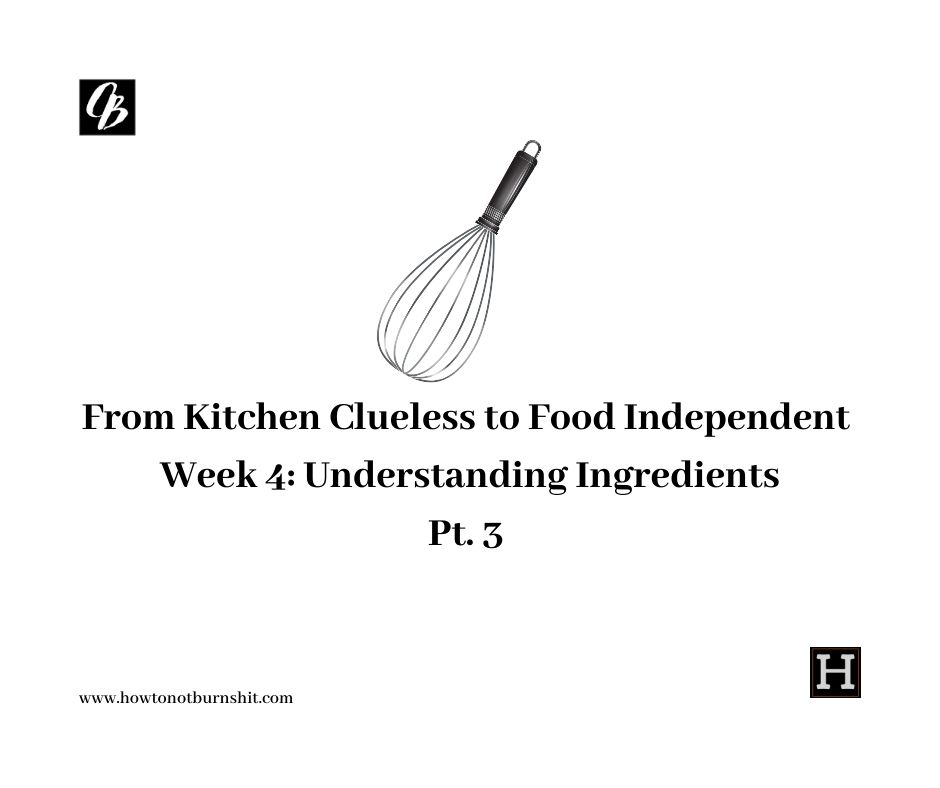
0 Comments